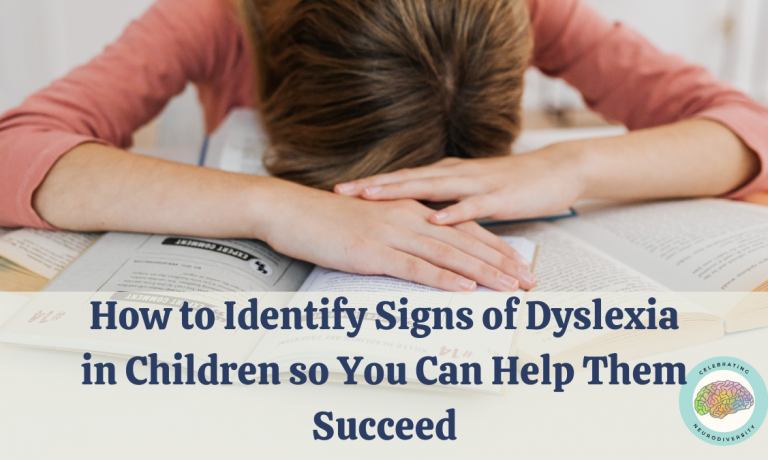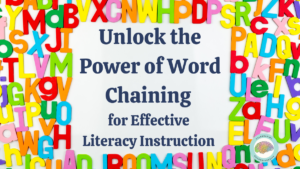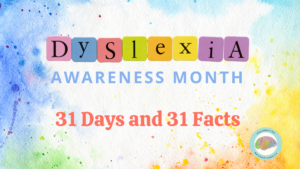
What does dyslexia look like?
Identifying signs of dyslexia in children is crucial to their future success. Dyslexia is a neurological difference that affects oral and written language. Dyslexia is the most common reading disability. It occurs along a spectrum of severity and looks a little different in every child.

Common Signs: Pre-kindergarten
Indications of dyslexia can be spotted even before the child learns to read.
Children may show the following:
- Start talking later than most children
- Difficulty pronouncing words. They may reverse sounds in a words or confuse words that sound alike.
- Slower to add new words to their vocabulary
- Have a hard time recalling familiar words and use “stuff” or “things” instead
- Problems learning, remembering, or naming letters, numbers, or colors
- Difficulty recognizing rhyming words
- Struggle to separate sounds in words and blend sounds to make words
- Have a hard time remembering sequences
- Fine motor skills may be delayed compared to peers
- Difficulty following multi-step directions
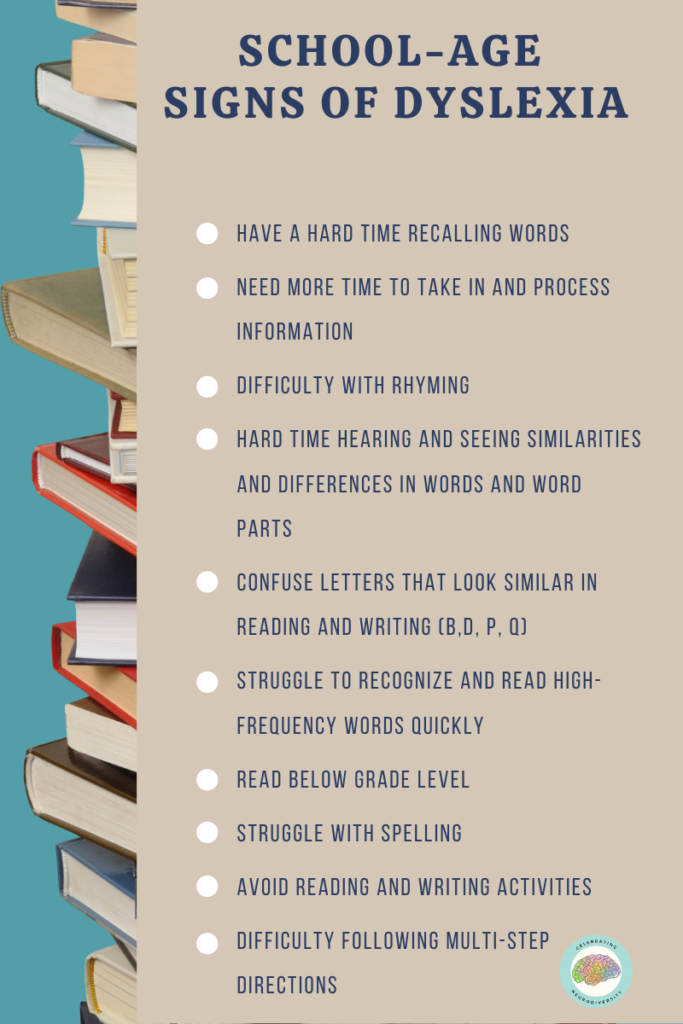
Common Signs: School-age
Once children begin elementary schooling, many of the signs continue, but other more apparent signs appear as children begin the formal process of learning to read.
Children may show the following:
- Slower to add new words to their vocabulary
- Have a hard time recalling words and use “stuff” or “things” instead
- Need more time to take in and process information auditorily
- Problems learning, remembering, or naming letters and the sounds of the letters
- Difficulty with rhyming
- Hard time hearing and seeing similarities and differences in words and word parts
- Confuse letters that look similar in reading and writing (b,d, p, q)
- Struggle to separate sounds in words and blend sounds to make words
- Difficulty understanding the relationship between sounds and letters
- Struggle to recognize and read high-frequency words quickly
- Skip or misread smaller high-frequency words
- Read below grade level
- Struggle with spelling
- Read and write at a slow pace
- Difficulty copying information from the board
- Avoid reading and writing activities
- Say he/she doesn’t like to read or says it is too hard
- Have a hard time remembering sequences
- Fine motor skills may be delayed compared to peers- including an awkward pencil grip and messy handwriting
- Difficulty following multi-step directions
- Trouble learning to tell time and memorize multiplication and division facts
- Struggle to learn a foreign language
Dyslexia is hereditary. If a family member had difficulties learning to read and spell, this is another indicator a child may have dyslexia.
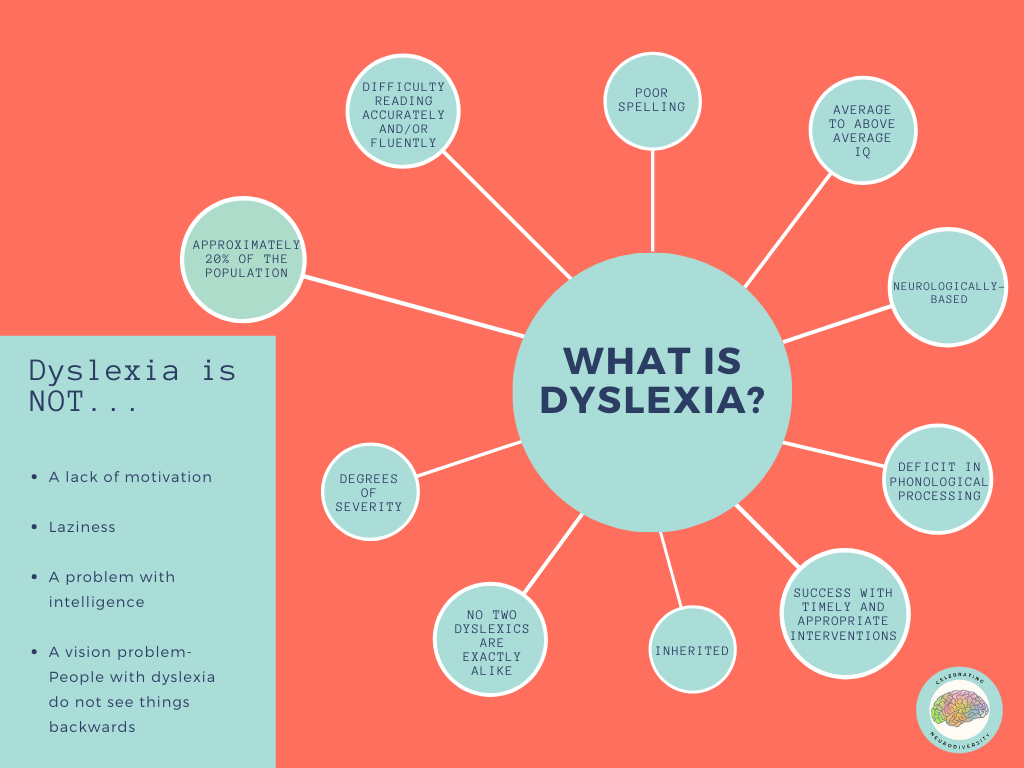
My child or student shows some of these signs, now what?
- Don’t wait it out- the sooner you can get proper intervention, the sooner the child will be on their way to reading success.
- Screenings should be in place to check language skills, phonological awareness, memory, and rapid naming. Many schools do not screen all of these areas. Evaluation by a qualified testing examiner may be needed.
- Connect with the school about specialized instruction for dyslexia or seek out a tutor that specializes in dyslexia and uses Orton-Gillingham methodology.
- Trust your instincts- Many parents come to me with valid concerns. School teachers may not have the proper knowledge of dyslexia. Trust your instincts and seek out help.
- Educate yourself- Check out my recommended resources here.

